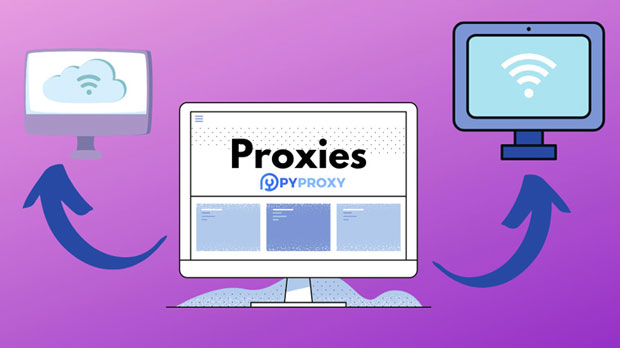In the digital age, accessing websites with reliability and security has become more critical than ever. When it comes to accessing online platforms such as file-sharing sites, stability and privacy are key factors to consider. HTTP, HTTPS, and SOCKS5 are three distinct protocols commonly used for web access, but which one offers the best stability when accessing a specific platform? This article will delve into the benefits and drawbacks of each protocol, examining factors such as speed, security, and accessibility, to determine which one is most stable for reliable use. Understanding the Basics of HTTP, HTTPS, and SOCKS5To begin, it’s important to understand what HTTP, HTTPS, and SOCKS5 are and how they function. These protocols are the primary means through which web traffic is routed between users and servers.- HTTP (Hypertext Transfer Protocol) is a standard for transferring data across the web. It does not encrypt data, making it faster but more vulnerable to interception and attacks. - HTTPS (Hypertext Transfer Protocol Secure) is an enhanced version of HTTP. It uses encryption to secure the data being transmitted, ensuring that sensitive information remains private. This added security layer, however, can result in slightly slower speeds compared to HTTP.- SOCKS5 (Socket Secure version 5) is a protocol that operates as a proxy server, routing your traffic through an intermediary server to provide anonymity and security. Unlike HTTP and HTTPS, SOCKS5 doesn’t interfere with specific protocols like HTTP or FTP, making it versatile for various types of internet traffic.Each protocol has distinct characteristics, and their stability depends largely on the user's needs, the type of website being accessed, and the overall network conditions.Factors Affecting Stability: Speed, Security, and AccessibilityWhen determining the most stable protocol for accessing a site, several factors need to be considered, including speed, security, and accessibility.Speed and PerformanceOne of the primary factors in determining the stability of a protocol is its speed. Users expect fast loading times when accessing websites, and this can be influenced by the protocol in use.- HTTP is generally the fastest protocol because it doesn’t employ encryption. Data can flow freely between the server and the user’s device, resulting in quicker load times. However, this speed comes at the cost of security.- HTTPS offers better security through encryption, but this process can cause a slight decrease in speed due to the extra processing required to establish a secure connection. However, in modern internet infrastructure, the speed reduction is often negligible and outweighed by the benefits of security.- SOCKS5 does not directly impact web traffic speed like HTTP and HTTPS, but the performance can depend on the server you connect through. Using a high-quality socks5 proxy server can lead to high-speed access, while a poor-quality server can slow down the connection significantly.For those who prioritize speed, HTTP would typically be the preferred option. However, HTTPS and SOCKS5 are often more suitable for users who value security and anonymity, even if it means a slight compromise in performance.Security and Privacy ConsiderationsWhile speed is important, security and privacy are critical for many users. Websites that deal with sensitive information, such as personal data or financial transactions, need to ensure a secure connection to protect users.- HTTP does not offer any encryption, making it vulnerable to hacking attempts, man-in-the-middle attacks, and data theft. This lack of security makes it an unsuitable choice for accessing sensitive websites or platforms.- HTTPS addresses these concerns by encrypting the data between the user and the server. This encryption ensures that even if the connection is intercepted, the data remains unreadable to unauthorized parties. For platforms requiring high levels of privacy, HTTPS is generally the best option.- SOCKS5 provides privacy and anonymity by routing traffic through an intermediary server, hiding the user's IP address and encrypting the data. This makes it an excellent choice for users who want to ensure complete anonymity and prevent tracking. However, the security of a SOCKS5 proxy can vary based on the service provider, and not all sock s5 proxies offer encryption by default.In terms of security, HTTPS is the clear leader for standard web browsing, especially when dealing with personal or financial information. SOCKS5 is preferred for users who prioritize anonymity and don’t mind configuring additional layers of encryption.Accessibility and Network StabilityIn some cases, accessibility and network stability can also play a significant role in determining which protocol is most reliable for accessing a site. The stability of a protocol depends on various factors such as network congestion, server availability, and geographic location.- HTTP can be easily accessed from almost any network and device, but its lack of encryption makes it more susceptible to being blocked or restricted by network filters, particularly in regions with strict internet regulations.- HTTPS is widely supported by most modern browsers and is less likely to be blocked due to its security benefits. However, some countries or networks that heavily regulate internet traffic may impose restrictions on HTTPS traffic.- SOCKS5 is particularly useful for users who need to bypass network restrictions or censorship. Since SOCKS5 proxies can route traffic through different servers, it allows users to access blocked sites or content in certain regions. However, the reliability of a SOCKS5 proxy depends on the quality and location of the proxy server. A poor or overloaded SOCKS5 server can cause slowdowns and connectivity issues.For users in areas with restricted access or censorship, SOCKS5 may offer the best flexibility. In terms of general accessibility, HTTPS is the most reliable choice, as it is widely accepted and unlikely to be blocked by modern networks.Conclusion: The Best Protocol for StabilityWhen deciding which protocol to use for accessing a website, stability should be evaluated in terms of speed, security, and accessibility. - HTTP is ideal for those seeking speed, but its lack of security makes it unsuitable for sensitive transactions or environments where privacy is a concern.- HTTPS offers the best balance of speed and security, making it the most stable choice for general web browsing, especially for sites that handle personal or financial data.- SOCKS5 excels in providing privacy and bypassing network restrictions, making it the best option for users seeking anonymity and for those in areas where internet access is restricted. However, its performance can be dependent on the quality of the proxy server used.In conclusion, for the most stable access, HTTPS is generally the best option for typical use. For users who prioritize privacy and circumventing restrictions, SOCKS5 offers a unique advantage. Each protocol serves different needs, and the best choice will depend on the user’s specific requirements.
Jul 14, 2025



































































